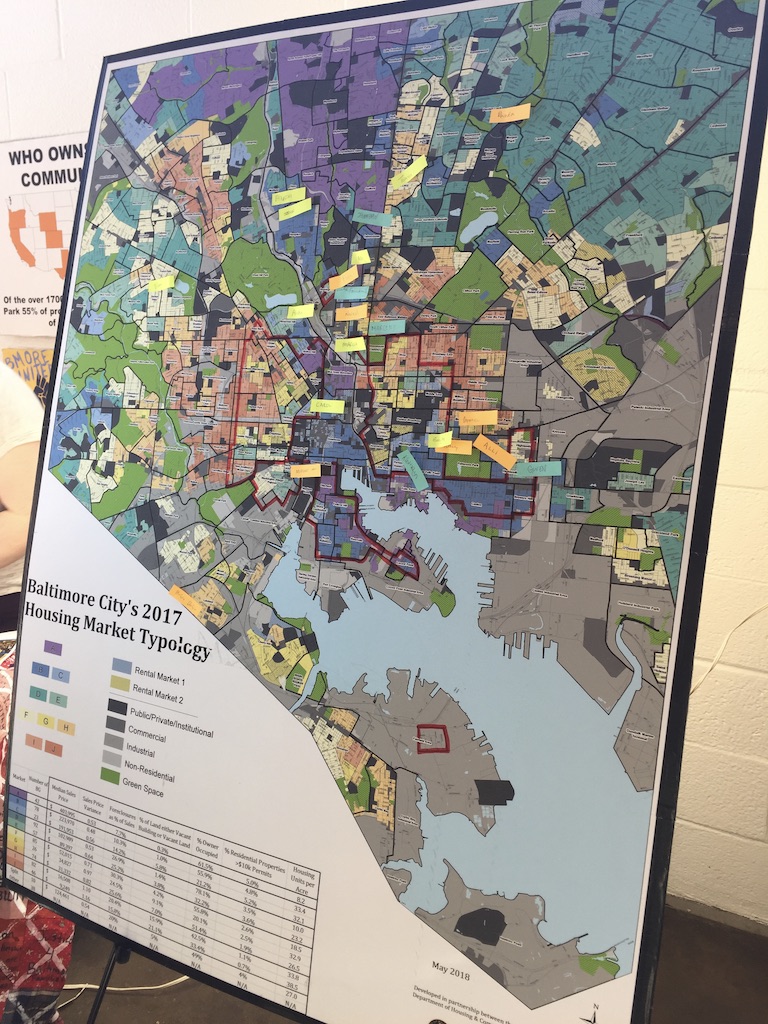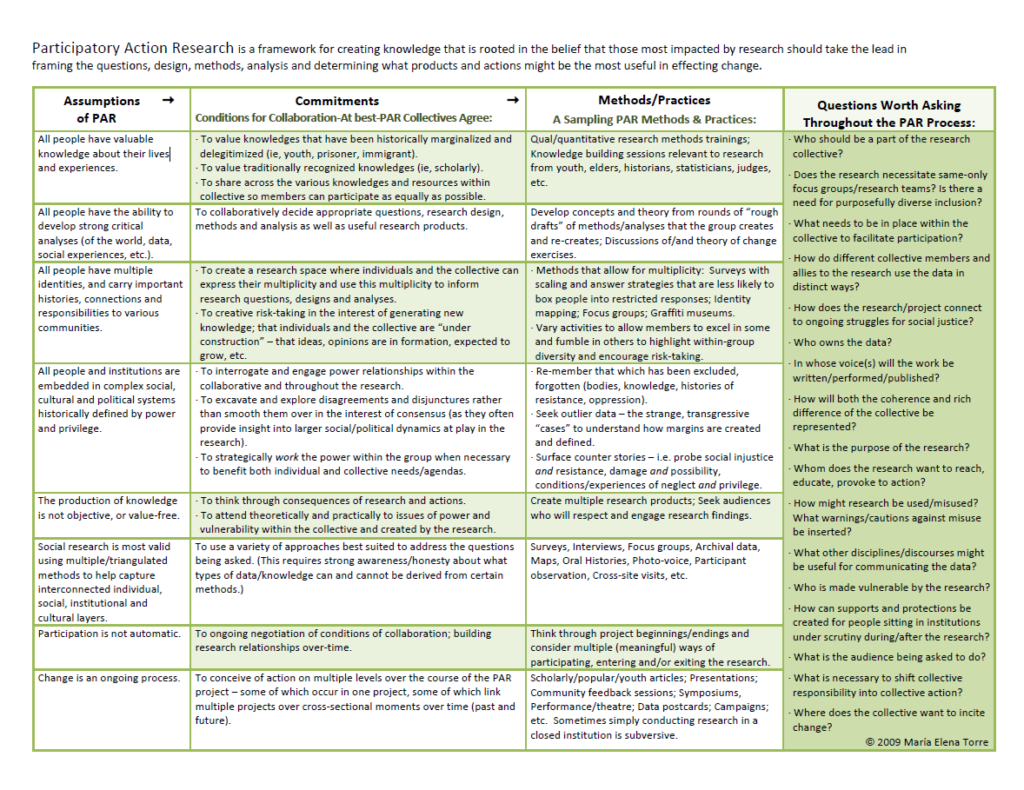
CPAR: Participatory action research
Towson University Department of Sociology and Anthropology has been partnering with South Baltimore Community Land Trust and Ben Franklin Environmental Science since 2015. Every academic year, we co-create curriculum on environmental justice and co-teach a seminar to 30+ high school students in Albina Joy’s environmental science class (now an independent study capstone). The seminar looks at the long history of “failed development” and proposes that students join action-oriented groups to begin to think through how to create change.
Our pedagogical training comes from Participatory Action Research (CPAR) which is a method of teaching/research emphasizing participation and action by members of communities most affected by that research. It seeks to understand the world by trying to change it, collaboratively and following reflection. PAR emphasizes collective inquiry and experimentation grounded in experience and social history. Nicole Fabricant (professor of anthropology) has taken members of our team to CUNY City University of New York to be trained in Participatory Action Methods of research and action. This week of training has provided a toolkit and foundation in critical participatory action research.
ABOUT THE CPAR PRogram at Benjamin Franklin High School
High school students at Ben Franklin spend an entire semester thinking about the kinds of research questions they want to investigate: many of the topics usually range from air pollution and health, illegal dumping, to food access and healthy food options. Students learn ethnographic and qualitative research methods alongside visual (photo voice and how to use the video camera). They spend a semester gathering data/evidence to answer their question. Much of the data is student-driven.
For example, one group that studied vacancies in the community began by looking at city databases to find out how many absentee houses and homeowners existed in the Curtis Bay community.
They then GPS located each home, took photographs and documented the conditions of these homes. The students created a map of the US illustrating 520 vacant homes in Curtis Bay with arrows reaching out to other cities/states indicating where absentee homeowners resided. This map has been used to advocate for the 20/20 city wide affordable housing trust fund and for support re: community land trusts.
The end of the semester results in a public dissemination where students present their findings to the greater south Baltimore community. Much of the data has been used to advance fair development work in Curtis Bay and the other 5 South Baltimore communities.
This partnership directly influences and shapes college-readiness for young students growing up in the 6 South Baltimore communities. We hone in on critical thinking and writing skills.
Students receive 3-college credits from Towson University and support in applying to community college or a four year college. From 2015 to 2022, we have prepared six of our Benjamin Franklin students attend Towson University. We have also helped 12 attend other four-year colleges. Further there have been nearly two dozen attending community college.

MEDIA coverage of CPAR WORK
Schedule a CPAR Training or speaking event
If you are an educator, fill out the form below or send an email to nfabricant@towson.edu to get in touch.
